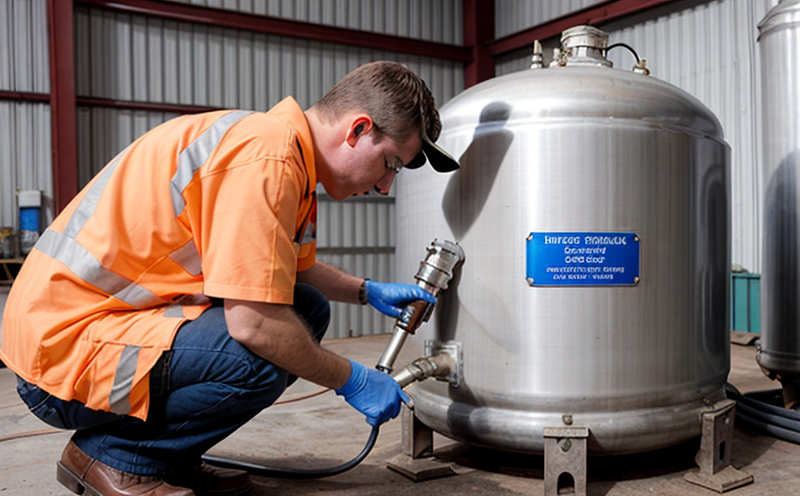Pressure vessel nameplate verification inspection
The pressure vessel nameplate is a critical document that provides essential information about the design, construction, and intended use of a pressure vessel or storage tank. This information includes operating parameters such as maximum allowable working pressure (MAWP), temperature limits, material specifications, and manufacturer details. Ensuring accuracy in these data points is paramount for operational safety, regulatory compliance, and maintenance planning.
Our nameplate verification inspection service provides a comprehensive assessment of the nameplate to ensure it accurately reflects the actual vessel's characteristics. This includes checking the plate against the original documentation provided by the manufacturer or designer. By verifying this information, we can identify any discrepancies that could pose safety risks or lead to non-compliance issues.
The inspection process begins with a thorough review of the nameplate itself. We examine the legibility and completeness of the information listed on the plate. Next, we compare it against the vessel's design specifications and relevant standards such as ASME Section VIII Division I/II or EN 13445 for pressure vessels. These international standards provide detailed guidelines on the proper labeling requirements for nameplates.
Once discrepancies are identified, our team will document them meticulously. This documentation serves multiple purposes: it acts as a record for any necessary corrective actions; it supports decision-making regarding potential updates to the vessel's operational parameters; and it ensures that all relevant parties—such as operations teams, maintenance personnel, and regulatory authorities—are aware of the findings.
Our approach is not just about identifying issues but also addressing them effectively. If discrepancies are found, we recommend corrective measures tailored to each specific case. These may range from minor adjustments in labeling to more extensive modifications if structural integrity or safety concerns arise. Our goal is always to provide solutions that enhance both operational efficiency and compliance with applicable regulations.
Customer satisfaction lies at the heart of our service offering. By ensuring accurate nameplate information, we help customers avoid costly downtime due to incorrect settings or potential legal challenges resulting from non-compliance. Moreover, this service contributes significantly to maintaining optimal performance levels throughout the vessel's lifecycle.
- Reduces risk of operational errors
- Avoids unnecessary maintenance costs
- Ensures adherence to safety standards
- Supports compliance with regulatory requirements
Scope and Methodology
The scope of our nameplate verification inspection covers all aspects related to the accuracy and completeness of the information provided on the pressure vessel's nameplate. This includes verifying the following key elements:
- Design pressures (PSIG/MPa)
- Temperature limits
- Material specifications
- Type and thickness of the vessel wall
- Manufacturer's identification details
We employ a rigorous methodology to conduct these inspections, which involves:
- Reviewing relevant design documentation provided by the manufacturer or designer.
- Inspecting the nameplate itself for legibility and completeness of information.
- Comparing the plate's data against ASME Section VIII Division I/II or EN 13445 specifications.
- Documenting any discrepancies identified during inspection.
This structured approach ensures that every aspect of the nameplate is thoroughly examined and verified. It also allows us to provide clear, actionable recommendations based on our findings.
Industry Applications
The pressure vessel nameplate verification inspection is widely applicable across various industries where safety, compliance, and operational efficiency are paramount:
- Pharmaceutical manufacturing
- Oil & gas exploration and production
- Petrochemical processing
- Food and beverage production
- Biofuels and renewable energy sectors
In each of these industries, pressure vessels play a crucial role in containing hazardous materials or operating under extreme conditions. Ensuring that the nameplate accurately reflects the vessel's capabilities is essential for preventing accidents and maintaining regulatory compliance.
Customer Impact and Satisfaction
- Enhanced Safety: Accurate nameplates prevent operational errors that could lead to catastrophic failures.
- Cost Savings: By avoiding unnecessary maintenance due to incorrect settings, customers save on associated costs.
- Regulatory Compliance: Ensuring all required information is correct helps avoid potential legal challenges and fines.
- Operational Efficiency: Correctly labeled vessels contribute to smoother operations by reducing downtime and improving workflow.





